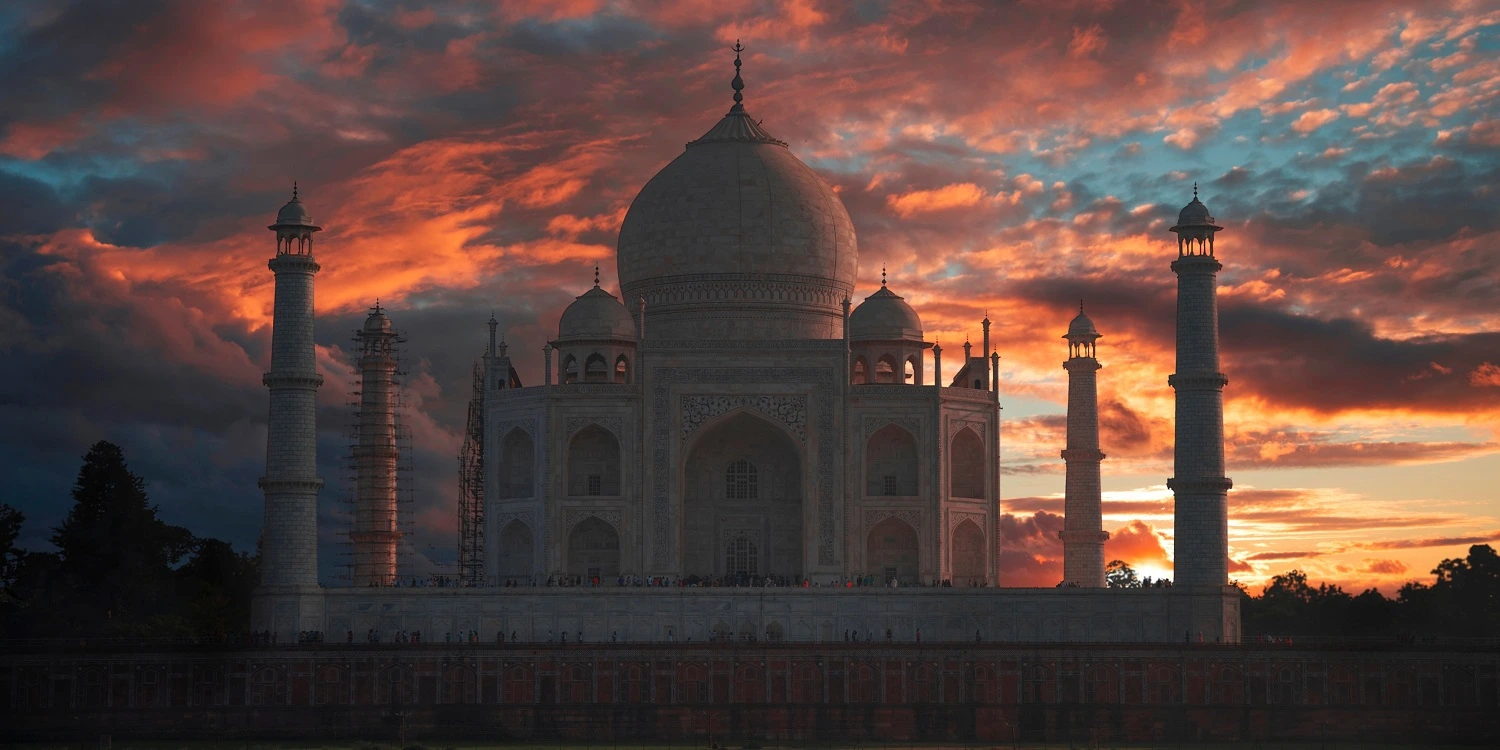The Taj Mahal – Visit India’s Favorite Heritage Monument
The Taj Mahal, one of the most iconic symbols of love and architectural marvels in the world, has captured the hearts and imaginations of people across the globe for centuries. Situated in Agra, India, this magnificent structure is not just a monument; it’s a testament to eternal love, extraordinary craftsmanship, and timeless beauty. Let’s embark on a journey to explore the Taj Mahal, India’s favorite heritage monument.

A Love Story Etched in Stone
The Taj Mahal was built by the Mughal Emperor Shah Jahan in memory of his beloved wife, Mumtaz Mahal, who died during childbirth in 1631. Shah Jahan’s grief was immeasurable, and he vowed to create a mausoleum so beautiful that it would mirror the purity of their love. The construction of the Taj Mahal began in 1632 and took over 20,000 artisans, craftsmen, and laborers more than two decades to complete.
Architectural Marvel
The Taj Mahal is renowned for its impeccable architectural design. It is a masterpiece of Mughal architecture, combining Persian, Indian, and Islamic influences seamlessly. The monument is built entirely of white marble, which shimmers in various shades throughout the day, creating an ever-changing play of light and shadow.
The central mausoleum is flanked by four minarets, each standing at 40 meters in height. These minarets are not only aesthetically pleasing but also serve a structural purpose. In case of an earthquake, they are designed to fall away from the main tomb, preserving it.
Intricate Inlay Work
As you approach the Taj Mahal, you’ll be awestruck by the intricate inlay work adorning its facade. Precious and semi-precious stones, including lapis lazuli, turquoise, and onyx, are skillfully inlaid into the marble to create intricate floral and geometric patterns. The level of detail is a testament to the exceptional craftsmanship of the artisans.
The Perfect Symmetry
One of the most striking features of the Taj Mahal is its perfect symmetry. The monument is precisely symmetrical along its central axis, creating a sense of harmony and balance. This symmetry is evident in its layout, architecture, and garden design, making it a visual delight from every angle.
The Serene Gardens
The Taj Mahal is surrounded by beautifully landscaped gardens known as the Charbagh. These gardens are divided into four quadrants by reflecting pools, and they add to the overall grandeur of the monument. The pools not only enhance the aesthetics but also symbolize the paradise mentioned in Islamic literature.
A UNESCO World Heritage Site
In 1983, the Taj Mahal was designated as a UNESCO World Heritage Site, recognizing its cultural significance and historical importance. It is also considered one of the New Seven Wonders of the World, further solidifying its status as a global icon.
Visiting the Taj Mahal
Visiting the Taj Mahal is a mesmerizing experience. Whether you’re exploring it at sunrise when the first rays of light kiss its gleaming facade or admiring it in the soft glow of sunset, the Taj Mahal never fails to captivate. Remember to respect the rules and regulations in place to preserve this cultural treasure for generations to come.
In conclusion, the Taj Mahal is not just a monument; it’s a living testament to love, art, and architectural genius. It has rightfully earned its place as India’s favorite heritage monument and continues to draw millions of visitors from around the world who come to witness its beauty and feel the aura of romance and history that permeates the air around it. If you ever find yourself in India, a visit to the Taj Mahal is an absolute must, for it promises an experience of a lifetime.
Explore enchanting Taj Mahal tour packages and immerse yourself in the timeless beauty of this UNESCO World Heritage Site. Discover the magic of India’s iconic monument with our expertly curated itineraries.

